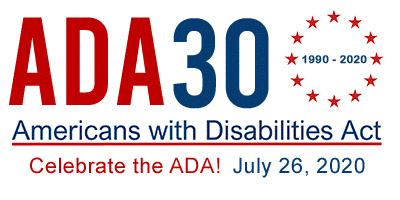
IlluminAge Communication Partners is proud to support the 30th anniversary of the Americans with Disabilities Act (ADA). President George H.W. Bush signed this important civil rights act into law on July 26, 1990. The ADA prohibits discrimination against individuals with disabilities in all areas of public life, including jobs, schools, transportation, and all public and private places that are open to the general public.
The purpose of the ADA is to ensure that people with disabilities have the same rights and opportunities as everyone else. Protecting those rights and opportunities reaches into myriad parts of everyday life, many of which are not noticed by people who do not live with disabilities.
Take, for example, the right and the opportunity to access online content such as websites. IlluminAge has always developed websites with accessibility in mind. We adhere to current standards to provide optimal user experience, to support best practices in accessibility, and to ensure compliance with ADA legal requirements.
All websites we design and build conform to Web Content Accessibility Guidelines (WCAG) 2.1, an international standard issued by the World Wide Web Consortium (W3C). According to W3C, when it comes to websites, “Accessibility involves a wide range of disabilities, including visual, auditory, physical, speech, cognitive, language, learning, and neurological disabilities. These guidelines also make Web content more usable by older individuals with changing abilities due to aging and often improve usability for users in general.”
What does that mean for someone with a disability who uses one of our clients’ websites? It means they can access the information on your site with the same ease as someone without a disability. Further, the experience of the site as a whole for a person with disabilities is comparable to that of a person without. For example, a website that conforms to the contrast requirements of WCAG features a high level of contrast between its elements. In this way, a person who has color blindness will be able to experience the website and access its information easily. Conversely, a site that does not meet the WCAG requirements might feature a low contrast level (e.g., red text on a green background), making it very difficult for a person with color blindness to view the site and its information.
Our website building process includes submitting sites through web accessibility checkers, which point out any accessibility shortcomings so that we can correct them before the site goes live. While there are endless benefits to being ADA compliant for the sake of user experience, websites, just like businesses, are subject to antidiscrimination laws. Doing this helps ensure that a site also meets legal requirements.
Of course, the work we do here at IlluminAge supports our clients in their own work with people who benefit from the ADA – older people and people of all ages with physical and mental challenges or disabilities. We’re honored to help.
You can read more about the ADA here.
